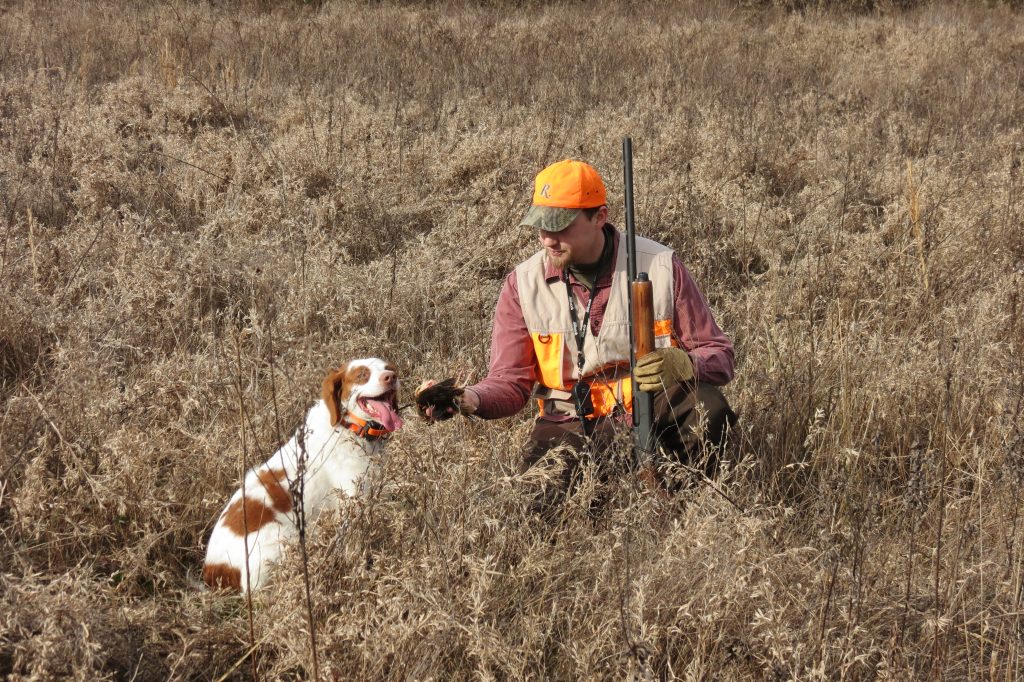
These last few days have put just enough crisp in the air to make me begin to feel the tingle in my stomach when I think about getting my 2-year old Llewellin setter out in the brambles again. The swish of bird pants on briers, the smell of wet leaves and creek bottoms, and the unfettered joy of seeing a young bird dog running free is almost close enough to touch.
“If only I had some place to go,” you say. Huh? In my best Jersey accent, “Yuse Godda be kiddin’ me!”
Chances are there is a good public lands upland bird hunting opportunity within no more than 45 minutes of where you live. That is if you enjoy the scouting and adventure as much as I do. If not, go buy yourself one of these new electronic “wall popper” games, get another bag of chips and some dip, and keep lengthening your belt size on your couch.
I upland bird hunt almost exclusively on public lands. I don’t have to ask anyone permission to go, don’t have to call ahead, and don’t have to worry about owing anyone anything in return for my access. They are our lands, yours and mine. A recent issue of the Quail Forever magazine was dedicated to public lands. “Hunt America: The Public Lands Issue” arrived at my home a few weeks back, not long after the Upland Bird Hunting Super Edition. Both were excellent. Kudos to Quail Forever on their magazine work.
The latest issue gave me the idea for this blog and I’ll try not to plagiarize their content, but I do want to make some of the same points … and maybe a few new ones. The issue focuses on a few germane topics: public lands hunting should matter to all hunters, especially upland bird hunters, we should all advocate for public lands, they should be kept public, and opportunity is ample on public lands across America. Even in the heavily populated East.
Most public hunting lands in Virginia also tend to be large enough that if you show up and someone is in your favorite spot, there is another place just down the road that will be almost as good. There’s room to roam! I hunted the Jefferson National Forest extensively in my youth (the better spent part of it anyway). The sheer joy of having hundreds of thousands of acres at my disposal and the energy to explore it was exhilarating. Find a map, get an old 4-wheel drive vehicle and set out. We’d leave before the sun made any heat and come home well after the moon was making shine, and never leave “the Jeff” all day.
We found a lot of special places along the way – some I still go back to and some I may never see again except in my dreams, but we never ran out of new sections to explore. And all of that without GPS, Google Earth and cell phones…I wonder what we could do now if we were still in our 20s? Maybe you are? What are you waiting for? Check out the USFS Young Forest Finder at this link: https://dgif-virginia.maps.arcgis.com/apps/webappviewer/index.html?id=189fab6e47cc4de089a6eec6750ea187&utm_source=dgif_hunting_page .
Here in Central Virginia we have multiple DGIF-owned Wildlife Management Areas. Most are in the 2,000 to 4,000-acre range, not so large that they can’t become well known to you in a few seasons. Our agency manages 44 WMAs comprising over 225,000 acres well distributed throughout the state. The area managers work hard for you every day and they want you to use their areas. They take pride in them. Information about them can be found at this link: https://www.dgif.virginia.gov/wma/ .
In addition to those areas, the Department of Forestry also has some large publicly huntable areas – their State Forests. The Appomattox-Buckingham, Cumberland and Prince Edward-Gallion States forests are about as central in our state as you can get. These three state forests alone represent over 40,000 acres of public lands. More information about all the state forests as well as regulations pertaining to them can be found at: http://www.dof.virginia.gov/stateforest/list/index.htm .
Most of Virginia’s military bases also offer ample public hunting opportunities with certain restrictions. And don’t forget about the over 40,000 acres of hunting lands surrounding the U.S. Army Corps of Engineers Kerr Reservoir (26 wildlife management areas – many offer some form of upland bird hunting). Or all the opportunities on State Parks, National Wildlife Refuges, and others. Not all these lands offer upland bird hunting, but many do. Information about all these lands can be found through our agency’s website at this link: https://www.dgif.virginia.gov/hunting/regulations/publiclands/ .
I had a hunter friend text me last winter. He had spent the day hunting one of our wildlife management areas in Central Virginia. He found six coveys of quail that day, along with some woodcock. Another life-long “old time” bird hunter I know found 56 coveys hunting public lands over the course of the season – in Virginia. These are men I know and trust. These stories are not made up.
The common denominator among the successful bird hunters I know in the modern era is hard work and passion. They wear out their boots before the seats of their pants. I encourage you to make use of all the modern scouting tools at your pleasure, but don’t forget in the end it will take a substantial investment of your boot leather to have success.


